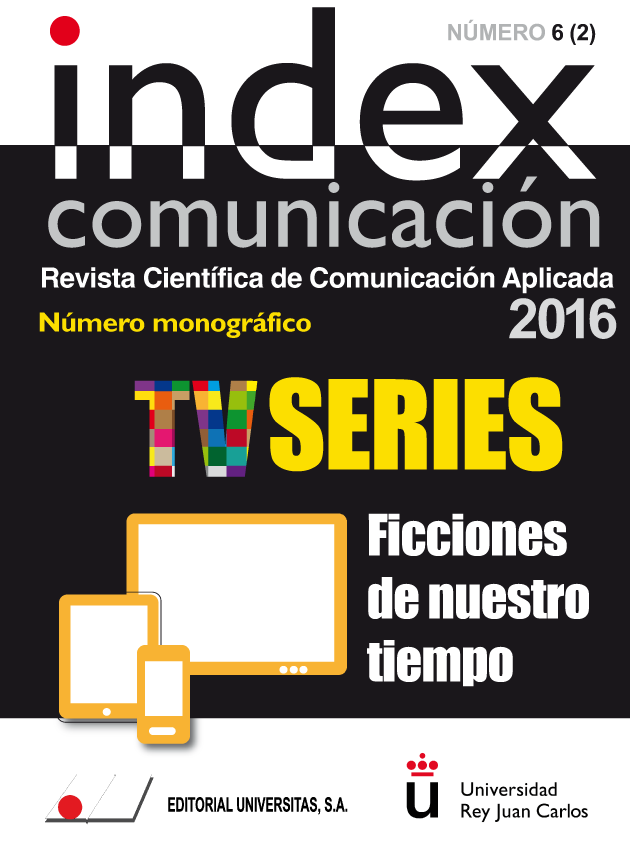Fiction series and video games: Transmedia and gamification in Contemporary Audiovisual discourses
Keywords:
Video Game, TV Series, Transmedia, Fiction, Gamification.Abstract
The connection between fiction series and video games is evident, and this relationship drives to new strategies to generate narratives within transmedia context. In this article we try to revise the connection between the two media through current productions, with the intention of identifying the contributions of the video game in the serial narrative universes. Within the context of the transmedia narrative discourses, strategies usually have emerged from the TV series to the video game. Currently this tendency is turning around, giving birth titles that have been fed from the video game as the primary source to draw up their storyline. Identifying the contributions of the video game to the transmedia ecosystem of contemporary audiovisual entertainment products, offers the chance to generate more attractive and innovative designs for the audience.Metrics
References
Egenfeldt-Nielsen, S.; Smith, J. H.; y Tosca, S. P. (2013): Understanding Video Games: The Essential Introduction. New York: Taylor y Francis.
Fidler, R. (1997): Mediamorphosis: Understanding New Media. London: SAGE Publications.
Gillezeau, M. y Saunders, E. (2013): Hands On - All Media Producing: Advice and Experience in All Media Producing. Sidney: Firelight Productions.
Gómez, Jeff (2007): ‘Jeff Gomez´s 8 Defining Characteristics of Transmedia Production’, en Christy´s Corner of the Universe, 7 de octubre. Consultado en línea el 6 julio de 2015 desde: http://www.christydena.com/2007/10/jeff-gomezs-8-defining-characteristics-of-transmedia-production/
Jenkins, Henry (2009): ‘The Revenge of the Origami Unicorn: Seven Principles of Transmedia Storytelling’, en Confessions of an ACA/Fan, 12 de diciembre. Consultado en línea el 12 julio de 2015 desde: http://www.henryjenkins.org/2009/12/the_revenge_of_the_origami_uni.html
Jenkins, Henry (2004): ‘Game Design as narrative architecture’, en Computer, nº 44(3), pp. 118-130.
Jenkins, Henry (2003): ‘Transmedia Storytelling: Moving characters from books to films to video games can make them stronger and more compelling’, en MIT Technology Review, 15 de enero. Consultado en línea el 15 julio de 2015 desde: https://www.technologyreview.com/s/401760/transmedia-storytelling/
Jenkins, H. y Lazcano, P. H. (2008): Convergence culture: La cultura de la convergencia de los medios de comunicación. Barcelona: Paidós.
Johnson, D.; Kompare, D. y Santo, A. (2014): Making Media Work: Cultures of Management in the Entertainment Industries. New York: NYU Press.
Jones, S. E. (2008): The Meaning of Video Games: Gaming and Textual Strategies. New York: Taylor y Francis.
Manovich, L. (2005): El lenguaje de los nuevos medios de comunicación: la imagen en la era digital. Barcelona: Paidós.
Mittell, J. (2015): Complex TV: The Poetics of Contemporary Television Storytelling. New York: NYU Press.
Scolari, C. A. (2013): Narrativas transmedia: Cuando todos los medios cuentan. Barcelona: Deusto, Centro Libros PAPF, S.L.U.
Downloads
Published
How to Cite
Issue
Section
License
Authors who submit to this journal agree to the following terms:
Authors retain copyright and ensure the magazine's right to be the first publication of the work as licensed under a Creative Commons Attribution-NoComercial 4.0 International License that allows others to share the work with an acknowledgment of authorship of the work and the initial publication in this magazine, with no commercial purpose.
Authors can establish separate additional agreements for non-exclusive distribution of the version of the work published in the magazine (for example, to an institutional repository or publish it in a book), with an acknowledgment of its initial publication in this journal.
It allows and authors are encouraged to disseminate their work electronically (eg, in institutional repositories or on their own website) prior to and during the submission process, as it can lead to productive exchanges, as well as a citation more early and most of the published work (See The Effect of Open Access).















